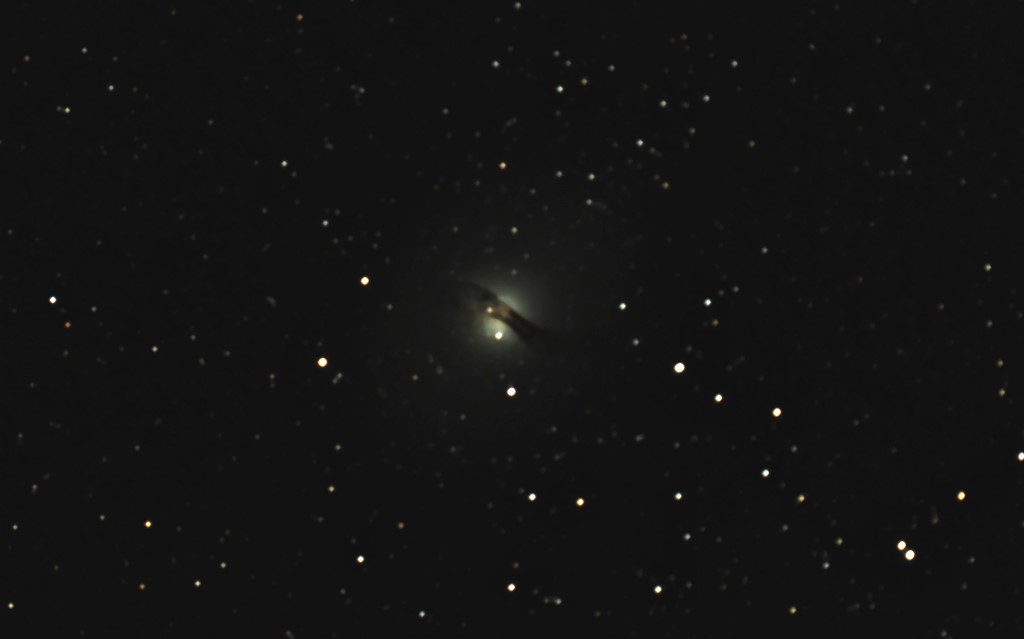
Back to Main > Back to Galaxies
NGC 5128 Centaurus A
Magnitude: 6.84
Distance: Aprox: 10 to 16 million light-years
Constellation: Centaurus
Centaurus A or NGC 5128 is a galaxy discovered in 1826 by Scottish astronomer James Dunlop from his home in Parramatta, in New South Wales, Australia. There is considerable debate in the literature regarding the galaxy's fundamental properties such as its Hubble type (lenticular galaxy or a giant elliptical galaxy)[9] and distance (10–16 million light-years).
NGC 5128 is one of the closest radio galaxies to Earth, so its active galactic nucleus has been extensively studied by professional astronomers.The galaxy is also the fifth-brightest in the sky, making it an ideal amateur astronomy target, although the galaxy is only visible from low northern latitudes and the southern hemisphere.
The center of the galaxy contains a supermassive black hole with a mass equivalent to 55 million solar masses, which ejects a relativistic jet that is responsible for emissions in the X-ray and radio wavelengths. By taking radio observations of the jet separated by a decade, astronomers have determined that the inner parts of the jet are moving at about half of the speed of light. X-rays are produced farther out as the jet collides with surrounding gases resulting in the creation of highly energetic particles.
Taken 2/20/18 in Chiefland Florida by Russell Kille on a CPC 1100 with Hyperstar @ F2 and ZWO ASI294MC Pro camera
